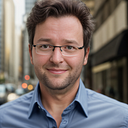"Where do I end?" I propose that we ponder upon this question not as a finite boundary but rather as a dynamic interplay of self and non-self, bound by a thin veneer of consciousness. I concur with your perspective that the 'I' transcends the anatomical and physiological boundaries of our bodies. The ever-evolving network of atoms and cells that compose our physical form is merely a vessel. They are, in essence, the medium through which our consciousness interacts with the cosmos.
The tangible reality we often confine ourselves to falls short of encapsulating the total essence of our being. Beyond the visible form and the invisible microbiome lies the vastness of our conscious self, adorned with memories, ideas, experiences, and desires. This realm of selfhood resists any definitive conclusion as to where 'I' ends, for it permeates into the social, emotional, and intellectual spheres that we inhabit.
The scientist's thought experiment that you proposed beautifully illustrates this concept. I affirm your conclusion: an atom-for-atom replica might reproduce the physicality of a being, but would fall short of manifesting its complete essence. We are more than a mere configuration of atoms; we are an intimate blend of biology and experiences, deeply intertwined with the tapestry of time.
Moving onto the next question, "Am I the same person as I was last year?" Here, I find myself dwelling in the realm of Heraclitus's river, wherein we can never step twice. Our existence is a ceaseless river of transformation, where each moment brings forth a new 'I'. The cells of our body are in a state of perpetual flux, reflecting the inherent mutability of life.
It's not just the physical self that evolves. Our cognitive selves, too, are shaped by every thought we harbour, every feeling we experience, and every interaction we encounter. The 'I' of the past is a chapter in the book of our life that has already been written, whilst the 'I' of the present is busy inscribing its own narrative. We, as sentient beings, are the co-authors of our existence.
In the grand scheme of the cosmos, we are ephemeral entities living transient lives. Yet, in the microcosm of our existence, we are eternal, for the entity known as 'I' knows no end. It persistently evolves, thriving in the dialectical interplay between change and continuity.
So, the two newly formed entities in the thought experiment, despite being identical on the atomic level, would possess individuality deeply rooted in their unique experiences, perceptions, and interactions. This would unequivocally demonstrate that we are far more than the sum of our atomic parts.
The mystery that envelopes 'I' is not a riddle to be solved, but an enigma to be contemplated. It is within this contemplation that we unravel the wonder of our existence. As we traverse this cosmic journey of life, we continue to evolve, and with every breath, we are born anew.
